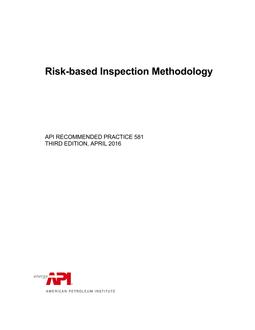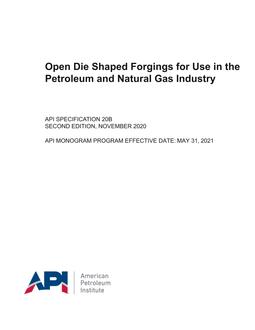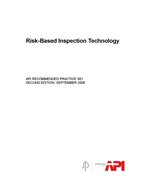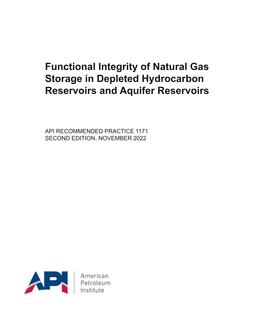
API RP 581
Click here to purchase
This is the first revision of RP 581 in nearly 8 years! This new revision contains over 1,000 technical changes.
This recommended practice, API RP 581 Risk-based Inspection Methodology, provides quantitative procedures to establish an inspection program using risk-based methods for pressurized fixed equipment including pressure vessel, piping, tankage, pressure relief devices (PRDs), and heat exchanger tube bundles.
API RP 581 Risk-based Inspection provides guidance for developing Risk-based Inspection (RBI) programs on fixed equipment in refining, petrochemical, chemical process plants and oil and gas production facilities. The intent is for API RP 581 to introduce the principles and present minimum general guidelines for RBI while this recommended practice provides quantitative calculation methods to determine an inspection plan.
The calculation of risk outlined in API RP 581 involves the determination of a probability of failure (POF) combined with the consequence of failure (COF). Failure is defined as a loss of containment from the pressure boundary resulting in leakage to the atmosphere or rupture of a pressurized component.
Risk increases as damage accumulates during in-service operation as the risk tolerance or risk target is approached and an inspection is recommended of sufficient effectiveness to better quantify the damage state of the component. The inspection action itself does not reduce the risk; however, it does reduce uncertainty and therefore allows more accurate quantification of the damage present in the component.
Product Details
- Edition:
- 3rd
- Published:
- 04/12/2016
- Number of Pages:
- 664
- File Size:
- 1 file , 4.4 MB
- Redline File Size:
- 2 files , 34 MB
- Product Code(s):
- C58103, C58103, C58103, C58103, C58103, C58103
- Note:
- This product is unavailable in Cuba, Iran, North Korea, Syria




